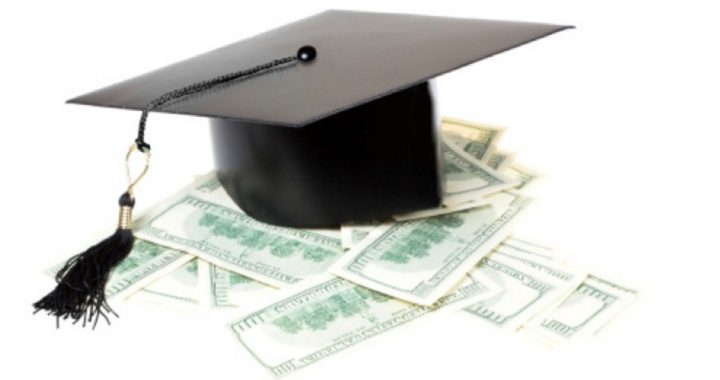
When President Obama signed the Student Aid and Fiscal Responsibility Act (SAFRA) into law in 2010, the response in the media, inside the Beltway, and on college campuses across the land was overwhelmingly positive. After all, SAFRA did away with the old system of using commercial banks as middlemen in the issuing of college loans that were backed by the U.S. government. Under the new legislation, the government was empowered to lend money directly to students, a piece of bureaucratic sleight of hand projected to save the government (and, it was believed at the time, students and taxpayers as well) tens if not hundreds of billions of dollars in the fairly near future.
But what seemed like a reasonable if inadequate response to the burgeoning student loan crisis (a crisis that, over the ensuing three years, has continued to worsen) has created an entirely new controversy. It turns out that allowing the government to issue student loans directly has led to an apparent conflict of interest in which — according to critics — the Federal Government is reaping tremendous profits on student loans, while college costs continue to soar and hard-pressed students are more indebted than ever.
As the Detroit Free Press’ David Jesse reported on November 26:
The federal government made enough money on student loans over the last year that, if it wanted, it could provide maximum-level Pell Grants of $5,645 to 7.3 million college students.
The $41.3-billion profit for the 2013 fiscal year is down $3.6 billion from the previous year but still enough to pay for one year of tuition at the University of Michigan for 2,955,426 Michigan residents.
It’s a higher profit level than all but two companies in the world: Exxon Mobil cleared $44.9 billion in 2012, and Apple cleared $41.7 billion.
If the figures are correct, they mean that the Federal Government — now in the business of issuing student loans directly to consumers, just like a commercial bank — is reaping windfall profits just like one of those giant private corporations that Big Government liberals are so quick to malign.
The bottom-line reality is a bit more complicated. It has been argued — somewhat cogently — that if more realistic accounting methods were applied to the student loan situation, the government would post significant losses over the long term instead of the profits claimed by detractors. As National Review’s Jason Richwine explained it:
There’s a basic problem with this theory. The profits don’t exist. The federal government projects $184 billion in student-loan profit over the next ten years only because it ignores the market risk inherent in expecting a given amount of loan money to be repaid. When the CBO instead applied fair-value accounting methods to the student-loan program, the $184 billion profit became a $95 billion cost. And if it were not for the government’s “ruthless” attempts to collect from delinquent borrowers … the cost to taxpayers would be even greater.
Because it incorporates the price of market risk, fair-value accounting is embraced by nearly all economists, including those at the CBO, as a more accurate way to report costs.
Richwine offered more details in a Heritage Foundation brief on the subject, and concluded that the costs of the program simply cannot be determined; as such, they are an unacceptable risk for American taxpayers:
If the federal government is truly able to turn a profit from its student loans in 2013, that raises the question of why private lenders have not offered similar loans to students. The lack of private competition suggests (but does not prove) that the CBO is using a fair value discount rate that is still too low, not fully reflecting the risk that private lenders perceive. Given the generous terms of federal student loans — flexible repayment periods, no credit check, no cosigner, the possibility of loan forgiveness, etc. — this would not be surprising.
It may be useful to query private lenders about the interest rate they would need to charge if they were to offer student loans on the same terms that the federal government does. That rate may be higher than even the CBO’s fair value discount rate, but it is likely the more appropriate rate to apply.
The federal government claims that student loans make money for taxpayers, but there is a strong possibility that they actually cost the government money. The hidden cost comes from the market risk taxpayers incur from expecting loan repayments that may not materialize. Current government accounting methods do not account for this risk, but “fair value accounting” properly incorporates the risk into cost estimates.
On the other hand, fair value accounting, while an undeniable improvement over historical cost accounting, is not oracular. The chief problem that cutting-edge accounting deals with, according to a friend who is a professor of accounting, is determining what “fair value” consists of. Anyone familiar with Austrian economics understands the impossibility of assigning a number to something as subjective as value. Further complicating the picture where student loans are concerned is the fact that “default” on student debt, within the current legal framework, is something quite different from default on most other kinds of debt; student loans, unlike other forms of debt, including credit card and business debt, cannot be discharged through bankruptcy. Thus a debtor who “defaults” on student debt cannot erase all or any portion of the creditor’s claim on his assets. Instead, his debt becomes non-performing, but continues accruing interest and penalties.
Regardless, Richwine’s overall point — that government is using antiquated accounting methods to plump up numbers on yet another disastrous government program — is probably valid. As he put it, “politicians do enjoy using the student-loan program to make the budget appear healthier. But these are phantom profits. There’s no income transfer from young people to government coffers…. The money is actually flowing first from taxpayers to students, then from students to universities.”
As it turns out, regardless of whether the government and U.S. taxpayers are making or losing money on student loans, the real issue — as Richline observes — is that, no matter how the program is tailored, it still amounts to a government subsidy of students and colleges, at taxpayer cost. And the spiraling rate of college tuition and other costs can be traced directly to government subsidies.
Thanks to government interference in higher education, universities and colleges have been transformed from primarily educational institutions to primarily administrative ones. The number and cost of salaried administrators have ballooned over the last three decades, while those that actually provide the service colleges and universities are supposed to provide — professors and instructors — have seen salaries and benefits decline precipitously. Universities are hiring fewer and fewer full-time and tenure-track faculty, choosing to rely increasingly on part-time instructors paid by the course and given no benefits. Many students are vaguely aware that their gargantuan tuition bills are primarily paying for the cost of administrators and bureaucrats, but — thanks to ongoing government subsidies — are not, in the main, overly concerned.
And there are other pitfalls in the new student loan regime which few are aware of. For example, the much-ballyhooed Income-Based Repayment program (IPR), which now allows students to petition for forgiveness of portions of their college loan based on lower-than-expected income, contains a hidden landmine: the IRS will tax all portions of student debt that have been forgiven as income, which will produce enormous tax bills for many debtors upon maturity of their college loans. As Megan McCardle observed in the Daily Beast (referencing a New York Times article on veterinarians in debt):
The bad news is that the interest on the debt keeps growing and taxes must be paid on the amount discharged, as if it is a gift. Dr. Schafer sends $400 a month to Sallie Mae, a sum that will rise. But what kind of tax bill awaits her? Asked to run the numbers, GL Advisor, a financial services company that specializes in student loans, calculated that Dr. Schafer’s debt is likely to exceed $650,000 when her tax bill lands 25 years after the start of the loan, which means she will owe the Internal Revenue Service roughly $200,000. That will happen while she is still deep in her career, perhaps around the time she wants to send some children to college.
There’s a real possibility of a sort of anti-moral-hazard here: students may take on lots of debt, figuring they can always go into IBR, but not understanding that they’ll be on the hook for an enormous tax bill.
As a general principle, we can assume that government will always spend far more than it takes in on any program, and then lie about the costs to maintain political support. This is what our government has done for decades with so-called entitlement programs like Social Security, and it is what it has done and continues to do with respect to student loans and other subsidies showered on the higher education sector. The best advice regarding the participation in and support of any government program — for students and non-students alike — is caveat emptor.



